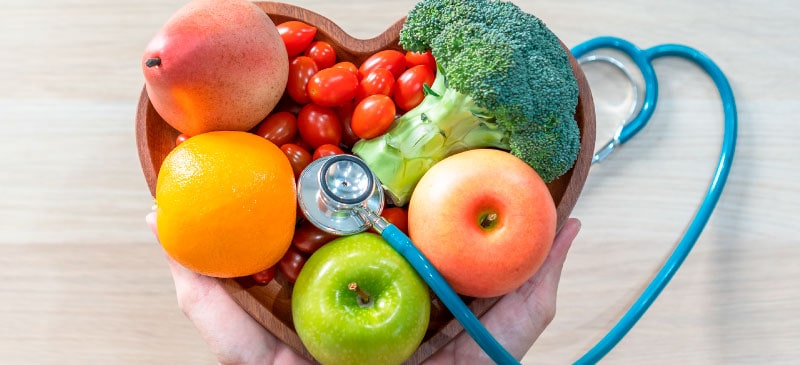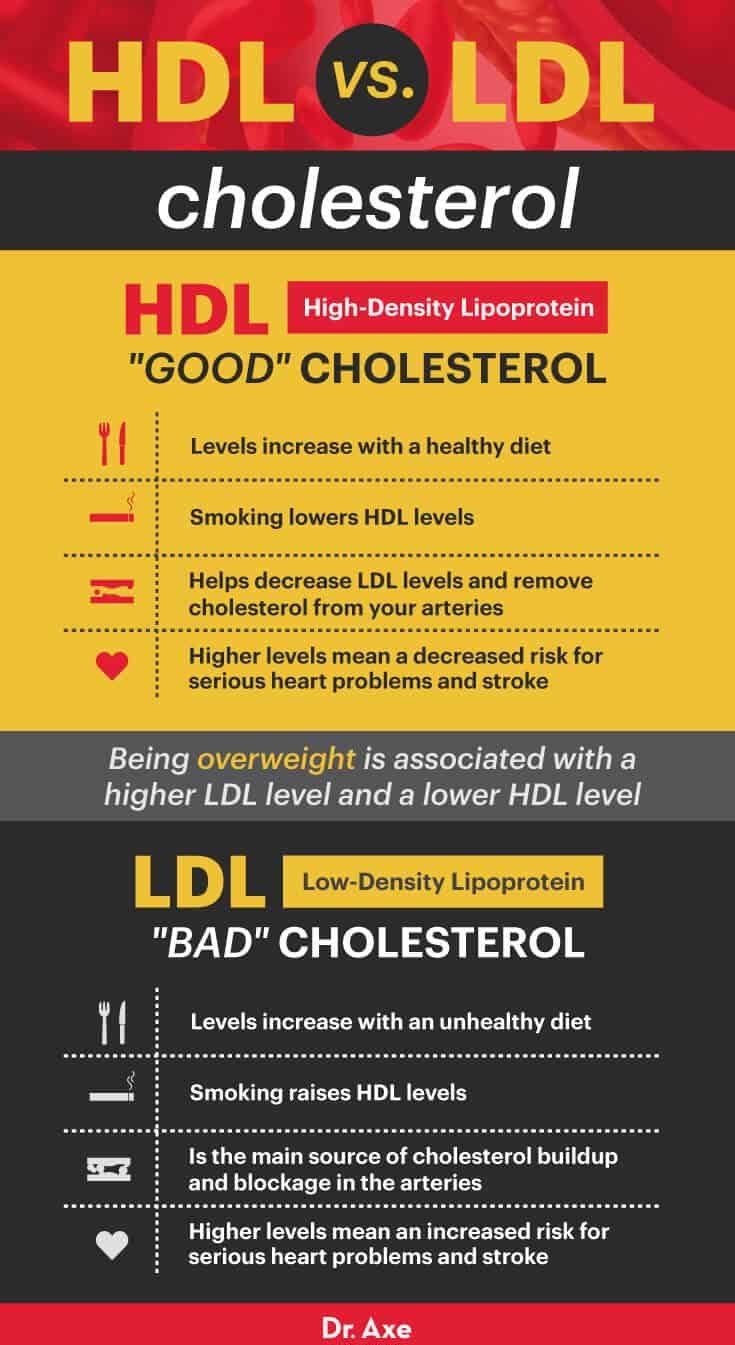This Dr. Axe content is medically reviewed or fact checked to ensure factually accurate information.
With strict editorial sourcing guidelines, we only link to academic research institutions, reputable media sites and, when research is available, medically peer-reviewed studies. Note that the numbers in parentheses (1, 2, etc.) are clickable links to these studies.
The information in our articles is NOT intended to replace a one-on-one relationship with a qualified health care professional and is not intended as medical advice.
This article is based on scientific evidence, written by experts and fact checked by our trained editorial staff. Note that the numbers in parentheses (1, 2, etc.) are clickable links to medically peer-reviewed studies.
Our team includes licensed nutritionists and dietitians, certified health education specialists, as well as certified strength and conditioning specialists, personal trainers and corrective exercise specialists. Our team aims to be not only thorough with its research, but also objective and unbiased.
The information in our articles is NOT intended to replace a one-on-one relationship with a qualified health care professional and is not intended as medical advice.
How to Increase ‘Good’ HDL Cholesterol
July 12, 2023

It’s a very common misconception that cholesterol is generally bad and high levels are always cause for serious concern. However, there is a type of cholesterol that’s not only good at higher levels, but also decreases your risk of major health issues like heart disease. It’s called HDL cholesterol, and it’s our “good” cholesterol.
So if there is a cholesterol that is actually good for us, how can we naturally increase its levels? The short answer is lifestyle. Your lifestyle actually has the single greatest impact on your HDL cholesterol level. So making changes to daily and completely controllable habits like diet and exercise can equate to healthier HDL and overall normal cholesterol levels, which can lower your risk for life-threatening health issues.
Let’s get started on improving those HDL cholesterol numbers because positive change can literally start today!
What Is HDL Cholesterol?
Total cholesterol is a measure of the total amount of cholesterol in your blood, which includes HDL, LDL and triglycerides. However, total cholesterol is mainly made up of LDL or “bad” cholesterol. Having high levels of low-density lipoprotein or LDL can lead to plaque buildup in your arteries, increasing your likelihood for heart disease and stroke.
LDL also raises your risk for a condition called peripheral artery disease, which can develop when plaque buildup narrows an artery supplying blood to the legs. The good news is that the higher your HDL level, the lower your body’s LDL level or “bad” cholesterol.
What is HDL? HDL stands for high-density lipoprotein cholesterol, which is commonly known as “good” cholesterol. High-density lipoproteins typically act as cholesterol scavengers by picking up excess cholesterol in your bloodstream and taking it back to your liver, where it’s properly broken down.
HDL is actually more complex than we once thought. Rather than being a single kind of particle, HDL is is now considered a family of different particles. All HDL contains lipids (fats), cholesterol and proteins (called apolipoproteins), but some types of HDL are spherical while others are shaped like a doughnut. Some HDL types remove bad cholesterol from the blood while other types are indifferent to cholesterol. Or even worse, some HDL transfers cholesterol the wrong way (into LDL and cells) or protects LDL in a way that makes it more harmful to the arteries.
HDL’s unpredictable actions are one of the reasons why lowering LDL cholesterol often gets more focus as primary defense against heart disease and stroke. However, the medical world, both conventional and holistic, still agrees that raising low HDL is a very smart health move because low HDL cholesterol can be more dangerous than high LDL cholesterol.
According to the Mayo Clinic, ideal HDL levels for both men and women are 60 milligrams of cholesterol per deciliter of blood. If a man’s HDL level is below 40 milligrams of cholesterol per deciliter of blood or a woman’s HDL level is below 50 milligrams of cholesterol per deciliter of blood, then disease risk, specifically heart disease, is considered to be heightened. Even if your HDL level is above the at-risk number (but below the desirable number), you still want to work on increasing your HDL level so you can decrease your heart disease risk.
As you already know, HDL is considered the good guy in the cholesterol game, and it can help your liver to get rid of the unhelpful cholesterol in your body. This is a very important task that HDL is able to accomplish since cholesterol can’t simply dissolve into the blood.
The liver has the job of processing cholesterol among its other important jobs. HDL is the liver’s helper and a very good one at that. Having high levels of HDL reduces your risk for both heart disease and stroke, which is why you want to get your cholesterol under control.
HDL vs. LDL Cholesterol
As we know, HDL cholesterol is the “good” cholesterol while LDL is the “bad” type. Here’s how the two stack up:
HDL
- high-density lipoprotein
- “good” cholesterol
- levels increase with a healthy diet
- smoking lowers HDL levels
- helps decrease LDL levels and remove cholesterol from your arteries
- higher levels mean a decreased risk for serious heart problems and stroke
LDL
- low-density liproprotein
- “bad” cholesterol
- levels increase with an unhealthy diet
- smoking raises LDL levels
- is the main source of cholesterol buildup and blockage in the arteries
- higher levels mean an increases risk for serious heart problems and stroke
- being overweight is associated with a higher LDL level and a lower HDL level
Natural Ways to Increase HDL Cholesterol
Your genes do play a role in determining how much HDL your body makes and the proportion of different subtypes. Your genes are obviously already decided for you and out of your control, but your lifestyle choices are in your control. Here are some of the best, and even some easy, ways that you can get those HDL cholesterol numbers up:
1. Don’t Smoke
As is always the case, smoking only makes health problems worse, and that includes HDL levels. Studies show that cigarette smoking adversely affects HDL by lowering its level, which further increases your risk for developing coronary heart disease. So if you smoke, you’re already increasing your risk for heart problems.
2. Exercise More
To maintain a healthy body, you should exercise on a daily basis. If you want another specific reason to start exercising or increase your frequency of exercise, it’s your HDL levels.
Increased physical activity directly helps raise your HDL cholesterol — just another one of the many benefits of exercise. Vigorous exercise is the best choice for boosting HDL, but any additional exercise is better than none.
3. Decrease Body Weight
If you’re currently overweight, losing even a few pounds can improve your HDL cholesterol. For every six pounds of weight you lose, your HDL can increase by 1 milligram per deciliter.
That’s means you want to lose weight, and if you’re extremely overweight, getting your HDL cholesterol levels in order is another reason to treat obesity.
4. Eat Healthier Fats
To improve your HDL level and your overall cholesterol, you definitely want to avoid trans fats, which are commonly found in hard margarines, baked goods and fried fast foods — all high-cholesterol foods. Conversely, you want to consume more cholesterol-lowering foods, such as healthy fats like those found in avocado, olive oil, nuts and salmon.
Why? Healthy fats help balance out the LDL cholesterol by lowering it and increasing HDL cholesterol, thus promoting a healthier heart. In fact, even the high-fat keto diet can reduce the risk of heart disease markers, including high cholesterol and triglycerides.
5. Reduce Refined Carbs
A diet high in refined carbohydrates like white bread, sugar, etc., has a negative effect on your HDL level, so by reducing your intake of these types of carbohydrates you can improve your HDL. Opt for high-quality, healthier carbs like those found in sprouted breads and fruit.
6. Keep Alcohol Consumption Moderate
Overdoing it on alcohol consumption has never helped anyone’s general status and especially not that person’s health status. If you consume alcohol, always do it in moderation.
In fact, moderate alcohol consumption has actually been linked with higher levels of HDL cholesterol. Moderate consumption for healthy adults is one alcoholic drink per day for women of all ages and men over 65 and up to two drinks per day for mean 65 and under.
Organic red wine is a smart choice, but don’t start drinking just to improve HDL levels because overdoing does much more harm than good — both for cholesterol levels and your overall health.
7. Increase Niacin Intake
Niacin is a B vitamin that your body uses to turn food into energy. It also helps keep your digestive system, nervous system, skin, hair and eyes healthy. Most people get enough niacin or B3 from their diets, but niacin is often taken in prescription-strength doses to treat low HDL levels. Niacin supplementation can can raise HDL cholesterol by more than 30 percent.
Niacin can be taken at lower doses rather than prescription levels, but supplementation can cause unwanted niacin side effects, especially when taking at high dosages. Some negative results of taking niacin include experience flushing, an uncomfortable feeling of heat, itching or tingling in the skin. Other side effects can include gastrointestinal, muscle and liver problems.
When it comes to niacin, a safer bet is to aim to add more to your daily diet. The top niacin-rich foods include turkey, chicken breast, peanuts, mushrooms, liver, tuna, green peas, grass-fed beef, sunflower seeds and avocado.
8. Consider the Supplement Citrus Bergamot
Studies show that the antioxidant polyphenols in citrus bergamot not only support healthy cholesterol levels but also support a healthy HDL cholesterol to triglyceride ratio.
9. Consider Your Prescriptions
Could one of your current prescriptions be a cause of your low HDL levels? Medications such as anabolic steroids, beta blockers, benzodiazepines and progestins can depress HDL levels. If you take any of these medications, talk with your healthcare professional and consider if there is anything you can do that could take the place of your current prescription.
As you now know with HDL, a lot of times you personally can do a lot to positively impact your health without popping a questionable pill that might help one problem but cause another.

Final Thoughts
If you don’t already know your HDL level, you can find out from blood work that includes a lipid profile. This profile tells you your overall total cholesterol as well as its individual parts, including HDL and LDL. There are no obvious signs or symptoms of high LDL cholesterol and low HDL cholesterol so it’s very important to maintain a healthy lifestyle and get your cholesterol checked regularly!
Remember, some of the best ways to raise HDL cholesterol levels while simultaneously lowering LDL cholesterol include not smoking, exercising more, decreasing body weight, eating healthier fats, reducing refined carb intake, keeping alcohol consumption moderate, increasing niacin intake and watching your prescription drug use. Do these things and watch your HDL go up while your risk for heart disease and stroke goes down.








